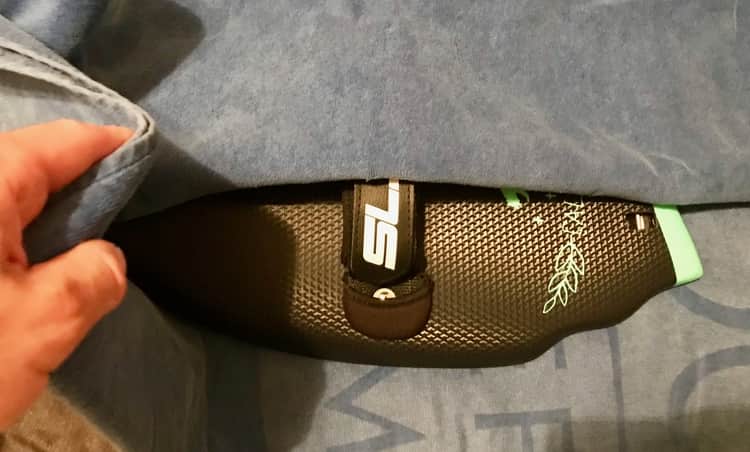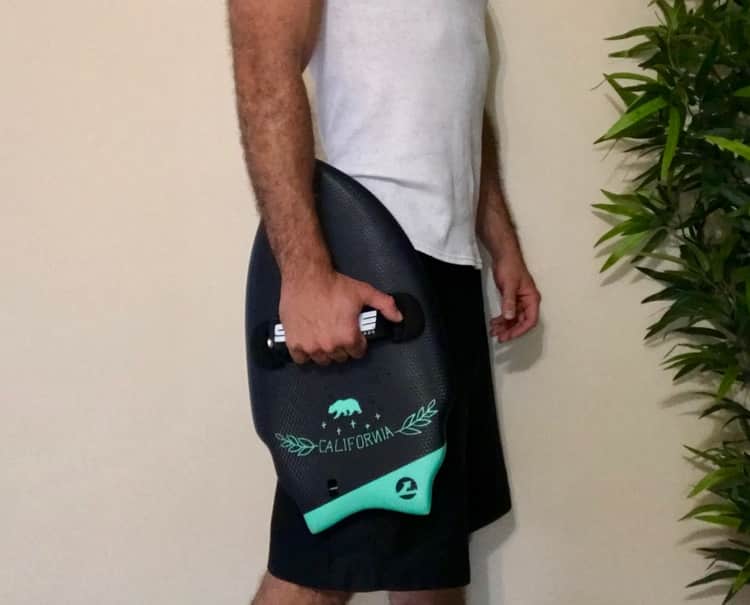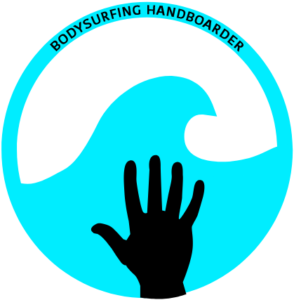The last thing any bodysurfer wants is to ding their handboard while transporting it to the beach. Fortunately, a bodysurfing
How do you transport your bodysurfing handboard so it does not get damaged? Here are 7 different ways to safely carry or travel with your handboard:
- Slyde handboard carry bag
- Drawstring bag
- Backpack / Daypack
- Wrap your handboard in a towel
- Swaddle your handboard in bubble wrap
- Bicep leash shoulder sling
- Carry vertically by the handstrap
These are the best ways to transport your bodysurfing handboard to the beach without damaging your board or looking like a kook! I know it is not the most important factor when it comes to bodysurfing but it is definitely something you should not neglect.
#1 Get a Slyde handboard carry bag
The Slyde handboard bag is by far the most convenient way of traveling with your handboard. It can accommodate just about any board size and board shape. Plus, there are a few extra pockets for your belongings.
Slyde put a lot of time, sweat, and money into this carry bag for your handboard. It is practical, functional, comfortable, and does a great job of protecting your bodysurfing handplane from accidental dings and damage due to the extra interior padding.
This handboard bag is water-resistant and also heat-resistant. It measures 25 inches long and 12.5 inches wide. The padded, adjustable shoulder strap is 3.5 feet long.
#2 Use a drawstring bag for your board
I use a drawstring bag to carry my bodysurfing handboard to and from the beach. This Nike drawstring backpack is just big enough to fit the Slyde Wedge inside.
It has a front pocket for your phone, keys, and wallet. There is a divider inside the bag if you want to place other items inside like a towel or sun cream.
This minimalist carry bag is very convenient if you want to travel light. I use it every time I go to the beach.
The only downside to this type of bag is the lack of padding. It is not as thick as the other options listed here but has still proven to be a safe way for me to transport my board.
#3 Put your handboard in a backpack

Using a backpack or daypack is a very safe and convenient way to transport your handboard. There is enough padding to protect your board from damage if it is accidentally dropped or if you walk into an object.
Backpacks have many extra compartments and pockets for your belongings, drinks, and snacks. It is very convenient for a long day of bodysurfing and can fit every handboard size.
#4 Wrap your handboard in a towel or clothes

Whenever you travel with your board, whether on a plane or in a car, it is best to wrap it in a towel or clothing. This will help to keep it protected in case any luggage in the overhead bin shifts or items in your car fall on your board. If this happens, the padding provided by clothing or a towel will prevent damage.
#5 Swaddle your handplane in bubble wrap
Like towels or clothing, bubble wrap is another excellent way to protect your board during travel. The tiny air pocket lining will save the nose, tail, and rails of your board. Bubble wrap is affordable and should be used if you plan on shipping your handplane.
#6 Create a bicep leash shoulder sling
This method of transporting your board is something I accidentally created one day. I discovered that fastening my velcro bicep leash cuff around the hand strap of my handboard forms a makeshift shoulder strap that can hold your board. Check out the image below.

Slinging the bicep leash over one shoulder will securely keep your handboard snug to your body. Your handboard will hug your hip so you can carry it hands-free. If you have no other way to carry your board and both of your hands are occupied, use this bicep leash shoulder sling!
Want to know how to create this makeshift shoulder strap for your handboard?
First, undo the velcro strap on the cuff and pull it all the way out freeing it of the clasp. Wrap the velcro strap around the handboard handstrap and then pull it back through the clasp. Pull the blue tab as tight as you can so the cuff forms a small circumference and then re-velcro.

#7 Carry vertically along your hip by the handstrap
Carrying your handboard by the handstrap is a secure way to transport your board from the car to the beach or anywhere else you walk. It keeps it close to the side of your hip without obstructing your natural gait.

Note the vertical position of your board from carrying it this way. As a result, the nose and tail are prevented from sticking out too far in front or behind you. It simply becomes an extension of your arm as you walk thus reducing the chance of accidental dings.
Related Questions:
How to pack a bodysurfing handboard for airplane travel?
As mentioned earlier, it is best to pack your board in between layers of clothing or towels inside of your luggage. You can also wrap it in bubble wrap. Adding layers of padding around your board will prove to be beneficial for the entire length of your trip.
How to pack a bodysurfing handboard for the car?
Again, using towels, bubble wrap, or blanket is a good idea. This will keep it protected in case other items in your trunk or back seat shift around during travel.
What are the most common places handboards get damaged?
Here are the most frequent surface areas of a handboard that get damaged:
- nose
- tail
- rails
You will notice that the underside and deck of your board rarely experience impact with other objects. Typically, any time you drop your board it lands on one of these three edges making them the most vulnerable. Therefore you need to make sure the nose, tail, and rails are fully protected during transportation.
